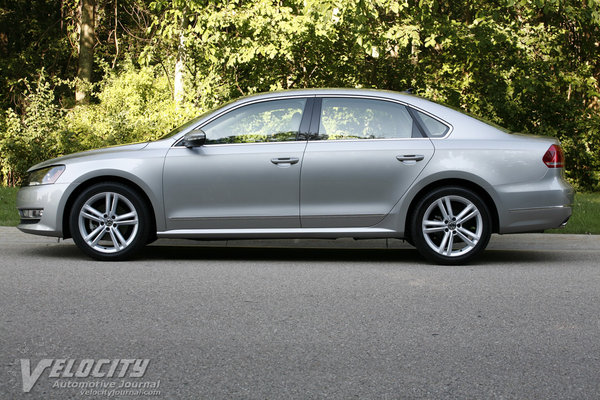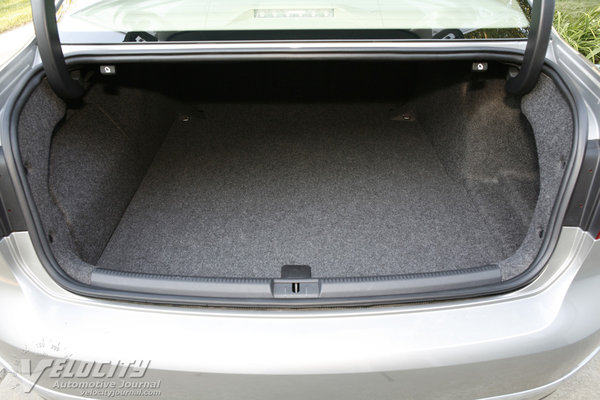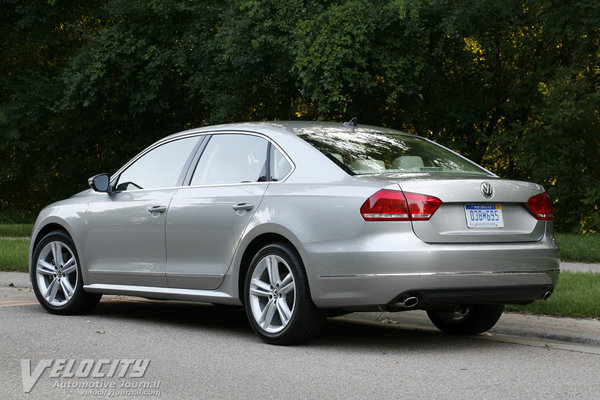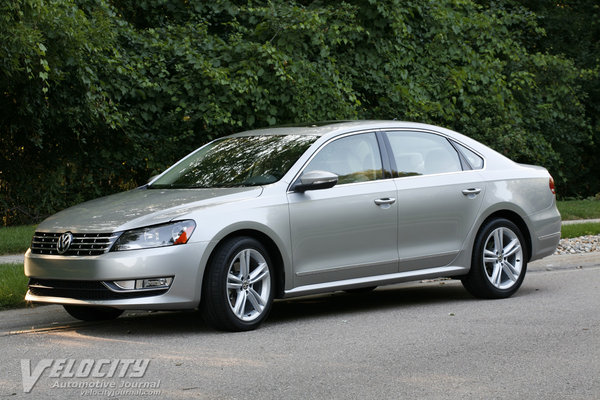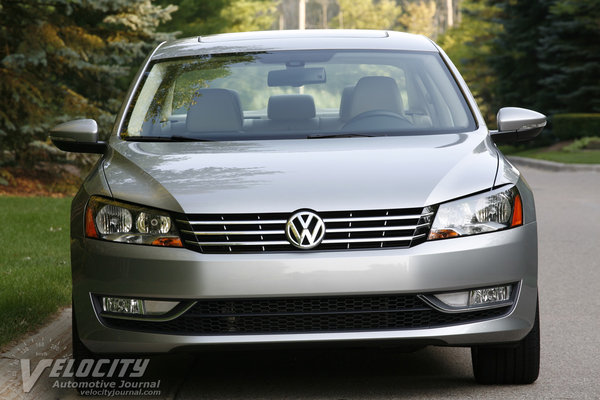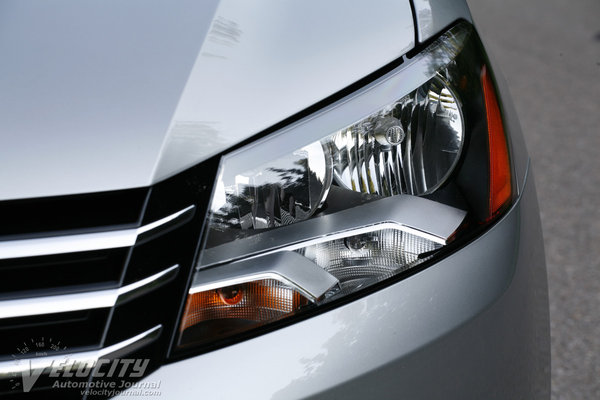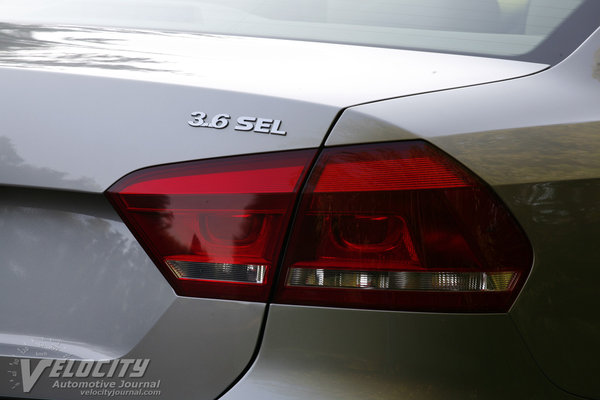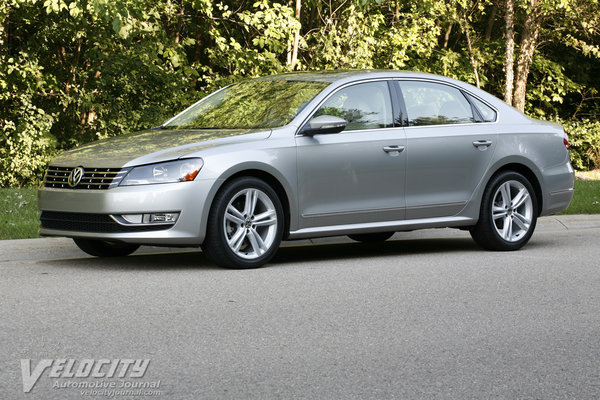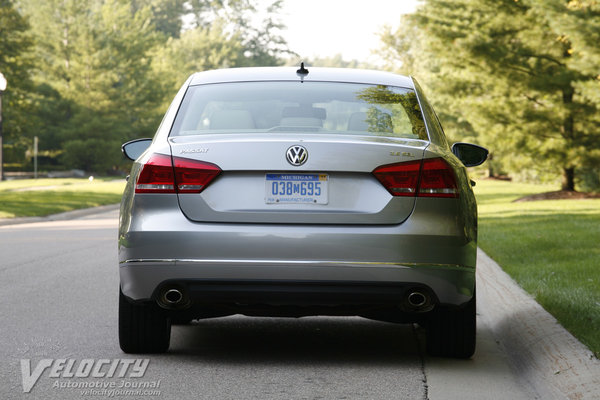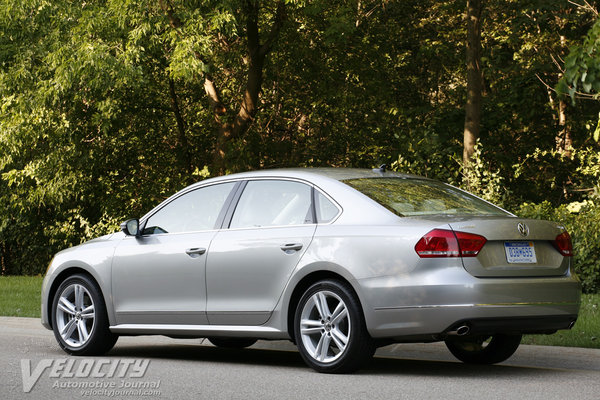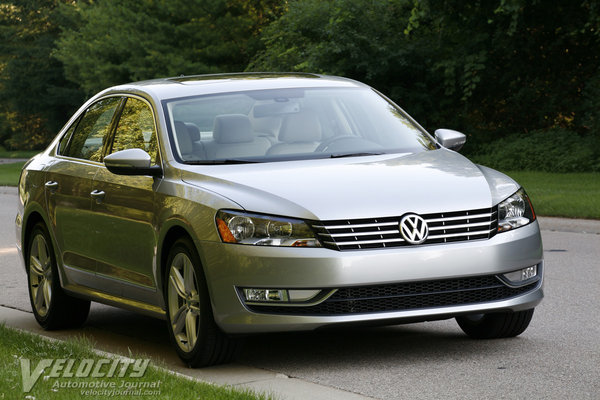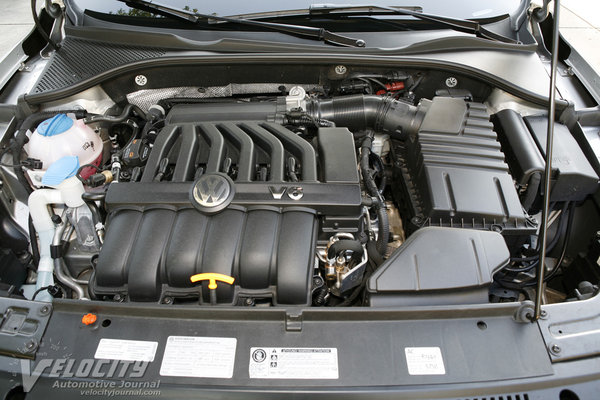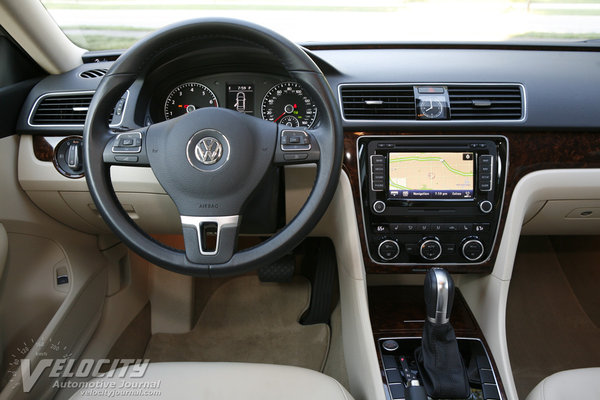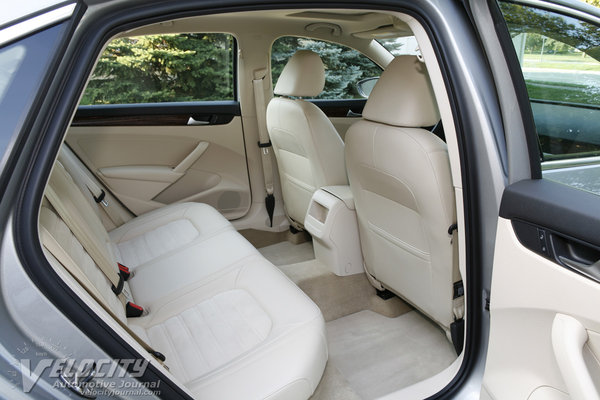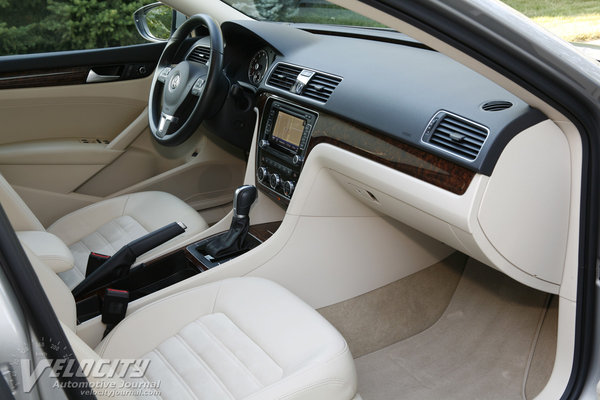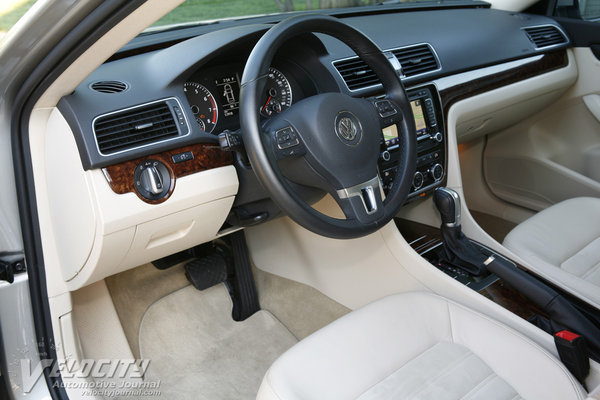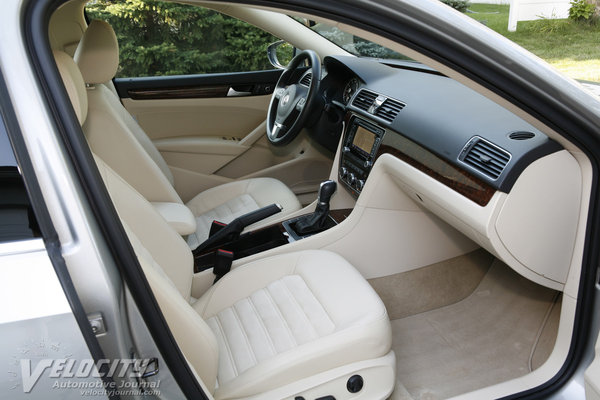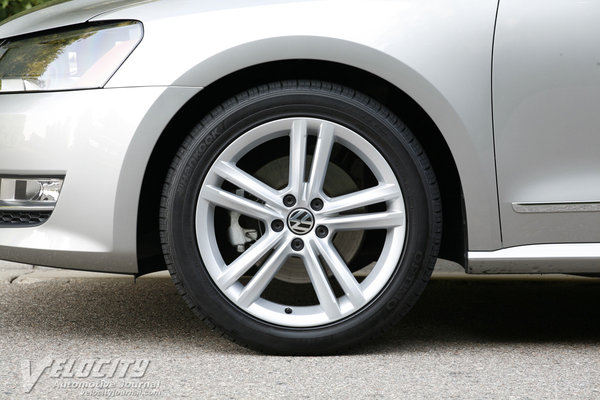2012 VW Passat 3.6 SEL
09/08/2012
Shahed Hussain
Long relegated to a tiny slice of the massive midsize family sedan market, Volkswagen has marked the US as a prime target for its ambitious expansion plans. As a result, the compact Jetta and the midsize Passat have both been upsized to match their American and Asian competition. Volkswagen's new assembly plant in Chattanooga now allows VW to price the Passat competitively with the best-selling midsize sedans.
VW offers the Passat in S, SE and SEL models with a choice of inline-5, or V-6 gasoline powerplants. The turbodiesel Passat TDI is available in SE and SEL trim levels. Manual or automatic transmissions are available with the 2.5L gas and 2.0L TDI powerplants, but the 3.6L V-6 is only equipped with a 6-speed DSG automatic. We tested a 2012 Passat SEL V6 Premium with no additional options. Sticker price was $32,950, plus the $770 destination charge for a total of $33,720. 2013 Passats start at $20,845 (Passat S) and range up to $33,525 for the V6 SEL Premium.
The Passat is assembled with Volkswagen's typical attention to detail. High quality materials and tight panel fits distinguish this VW from most other affordable midsize sedans. The upper dash is soft grained plastic, the armrests are comfortably padded, and leather covers the steering wheel and shift knob. The hard plastic center console and simulated wood on the dash, doors, and center console are expected from less expensive sedans, but for a Passat that costs over $33K, real wood veneer is expected.
The steering wheel has convenient handgrips on the 10 and 2 o'clock positions. Controls for the audio, phone, and trip computer are integrated on the spokes. Gauges consist of an 8,000 RPM tachometer and a 160-MPH speedometer with smaller fuel and coolant temperature gauges inset within. A multi-function display shows vehicle status and trip computer information. Replacing the standard key is an engine start/stop button on the center console next to the transmission shift lever. Clearly marked climate control buttons and knobs require minimal effort to use while driving. Dual cupholders are hidden under a flip-out door on the center console. Under the center armrest is a storage bin with a 12V power outlet and an iPod adapter. The satellite navigation system's voice directions were easy to follow and provided accurate route instructions. Although the touchscreen interface is intuitive and straightforward, the sparse map detail and dated graphics compare unfavorably to current portable GPS devices.
Replacing the leatherette-covered seats in lesser Passats, the SEL gets leather with simulated suede inserts. Although the 8-way power front seats sacrifice some lateral support, they proved comfortable and fatigue-free during a 300-mile road trip. Front headroom is acceptable for 6-ft. tall passengers, even with the standard sunroof. Rear passengers will appreciate the spacious bench seat and ample legroom.
Even though the new Passat is significantly larger than the previous model, its total interior volume of 102.0 cu. ft. ranks it just under the Toyota Camry (102.7 cu. ft.) and Honda Accord (102-106 cu. ft.). The Passat's trunk capacity of 15.9 cu. ft. exceeds the Camry by 0.5 cu. ft., but the curved decklid hinges subtract from usable space. Volkswagen's have tended to be heavier than their Japanese and American counterparts, but the Passat SEL weighs in at 3,446 lbs., 97 lbs. less than the Accord V-6 (3,543 lbs.), and almost 400 lbs. lighter than the Buick LaCrosse. However, both the Camry XLE V-6 (3,395 lbs.) and new Altima 3.5 SL (3,355 lbs.) undercut the Passat, but not by much.
The Passat SEL is available with a choice of the 2.5L inline-5 or the 3.6L VR6 engine. Although most other sixes in this segment are all-aluminum, Volkswagen's VR6 is an iron-block and aluminum head powerplant. The narrow-angle V-6 cranks out an impressive 280-bhp @ 6,200 RPM; torque output is a substantial 258 lb.-ft. from 2,500-5,000 RPM. Note that the VR6 requires premium unleaded in return for its class-leading power. Unsurprisingly, the Passat's midrange punch ensure stress-free highway passing. At full throttle, only a faint thrum penetrates the cabin as the Passat accelerates with satisfying authority. Despite its muscular power output, the VR6 is completely docile in normal driving. At idle, the VR6 clicks and clatters more than other comparable sixes, but the racket quickly subsides once warmed up. In our mostly highway driving miles, we averaged 27-28 MPG, essentially mirroring the EPA estimate of 28 MPG. City mileage is rated at 20 MPG. VW limits the Passat to 130 MPH, a non-issue for American roads.
The standard DSG transmission is a dual-clutch 6-speed gearbox that shifts with the liquid smoothness of a conventional torque converter automatic. Dual paddle shifters on the steering column allow manual shifting when desired. The shift programming delays full throttle downshifts a few seconds before the DSG drops down a couple of gears. Using the paddle shifters or the transmission sport mode allows faster downshifts when desired.
The Passat's front suspension consists of the typical MacPherson struts, coil springs, lower control arms, dampers and anti-roll bar. At the rear is a 4-link layout with coil springs, dampers, and anti-roll bar. Eighteen-inch alloy wheels are standard, along with 235/45R18 Hankook Optimo tires. Vented front and solid rear disc brakes with ABS and ESC (Electronic Stability Control) are standard.
The Passat's rack-and-pinion steering offers a nearly ideal combination of excellent feedback and effort. Around town, the hydraulically-assisted steering is light, but at higher speed effort is dialed down significantly. The Hankook tires require constant steering corrections, and their constant understeer discourages probing the Passat's handling limits.
Traditionally, Volkswagen's suspension tuning leans toward the comfort-oriented end of the spectrum, but with typical Germanic tight damping to control body motions. With the new Passat, VW has softened up the suspension to appeal to a larger swath of midsize sedan buyers. Ironically, the standard 18-inch wheels and tires hammer over sharp bumps, yet the Passat floats over gentle undulations. Around curves, the Passat's moderate body roll is on par with other midsize sedans in its class. Stiffer anti-roll bars would certainly improve handling, but the Volkswagen's compliant ride would suffer. Tire and wind noise on most roads are subdued, but on concrete-surfaced highways tire hiss is especially noticeable. Most of the Passat's handling flaws are attributable to the 18-inch wheels and Hankook tires. We subsequently drove a Passat 2.5 SE equipped with 17-inch wheels and Continental tires, which proved to be substantially superior in both ride and handling.
As a midsize sedan equally adept at the daily commute or extended road trips, the Passat is a superb alternative to its Japanese and American competition. Although traditionalists may be disappointed by the dilution of the Passat's Germanic heritage, VW knows that Americans expect family sedans to be spacious, comfortable, and affordable. The premium Passat 3.6 SEL may be too expensive for most family budgets, but the midrange Passat 2.5 SE is a significantly less expensive alternative. Volkswagen is serious about expanding its presence the midsize sedan market, and the Passat is proof that VW is finally giving Americans what they want.

